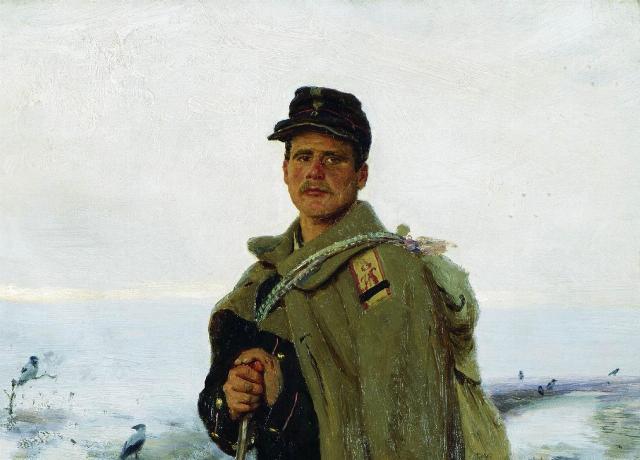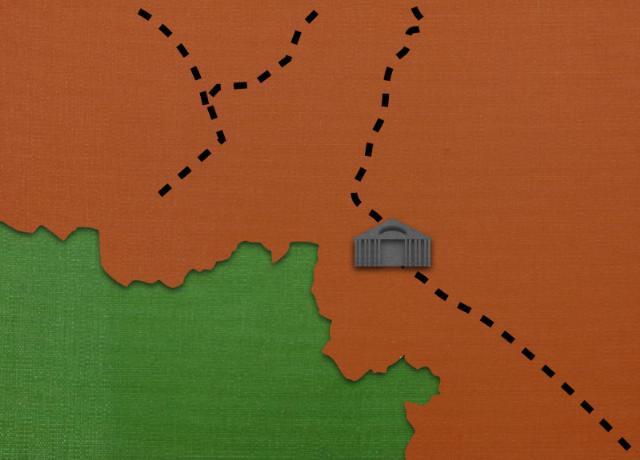Colleagues from the Independent Center for Defense Studies have published a Russian translation of the interesting material by the American military historian and former US Marine Corps officer Bruce Ivar Gudmundsson "The Invasion West of Kursk" from his blog "The Tactical Notebook", offering a non-standard, albeit controversial, A "logistical" explanation of one of the military reasons for the invasion of the Armed Forces of Ukraine in the Kursk region of the Russian Federation.

Ilya Repin "Hero of the Last War" (1878, fragment)
Calm fronts have been formed in many wars. Indeed, before the sharp increase in the number of armies at the end of the XVIII century, the concentration of troops in a small part of the space available to them often led to situations where significant areas were guarded by little more than a handful of gendarmes and fortresses.
This has been the case for most of the ongoing war between Russia and Ukraine. At many stages of this conflict, there was practically no military activity of any kind, not to mention the operations of large ground formations, in significant sections of the border territories connecting the territories of the two warring parties. In particular, the lion's share of the border separating northern Ukraine from southern Russia, about 400 kilometers (250 miles) long, remained surprisingly calm throughout most of the war.
One big exception to this general rule occurred when in May and June 2024, the Russians conducted a series of "limited-purpose attacks" north of the city of Kharkiv. Touted as a means of creating a "buffer zone," they created a pair of modest enclaves, each extending into Ukraine to a depth of about 12 kilometers. Another deviation from the general pattern was the Ukrainian offensive towards the Russian city of Kursk, which began on August 6, 2024.
John Mearsheimer argued that since the Kursk offensive has no obvious military purpose, it must be nothing more than a PR exercise. The units involved in the operation, he adds, would be more useful to the Ukrainian military efforts if they were used to "support the forces that are buckling under the Russian steamroller in the eastern part of Ukraine.
I would like to offer a slightly different point of view, which, like much else in The Tactical Notebook, is largely based on my research of the First World War. In the midst of the fighting of its last years, the commanders of the German formations holding positions on the Western Front came to the conclusion that after a certain point, the deployment of additional forces in certain positions does little in terms of strengthening their resistance forces. Most likely, this only increased the likelihood that a certain artillery shell would find its victim.
During the same period, the French and British commanders realized that in operations that depended on the explosion of many thousands of such shells, the pace of any advance depended on the speed with which shelling could be organized. The latter, in turn, relied on the speed at which trains, trucks and vans could deliver ammunition supplies to the firing batteries.
If such dynamics are typical for the fighting in eastern Ukraine, then it would hardly make sense for Ukrainians to use their best reserve formations to "support" their colleagues on the path of the steamroller. Most likely, a wise commander would look for opportunities to use such forces in places poorly supplied with artillery ammunition, or, even better, the ability to quickly and safely transport several thousand fifty-kilogram shells.
The vast majority of the shelling carried out by Russian troops in Ukraine is carried out in areas that are easily secured by rail. Indeed, the developed railway network of Donbass could well have been a decisive factor in convincing the Russians to wage a long campaign of attrition in this region. However, the Russian troops fighting southwest of Kursk will have to be content with what can be sent along two lines running from this city to the south.
I find that maps are easier to read than people's thoughts. Therefore, I will refrain from thinking about the future course of the Ukrainian invasion of the area southwest of Kursk. Nevertheless, it seems that the key to Ukraine's success in this operation is to conduct a well-organized withdrawal of troops before the Russians can deploy large amounts of well-equipped artillery. After all, if the Ukrainian formations that entered Russia end up under Donbass-style shelling, they will deprive the otherwise impressive operation of its raison d'etre (meaning of existence).

The railways leading south from Kursk pass near the site of the Ukrainian invasion (the eastern line passes through the city of Sudzha) (c) Bruce Ivar Gudmundsson / tacticalnotebook.substack.com
